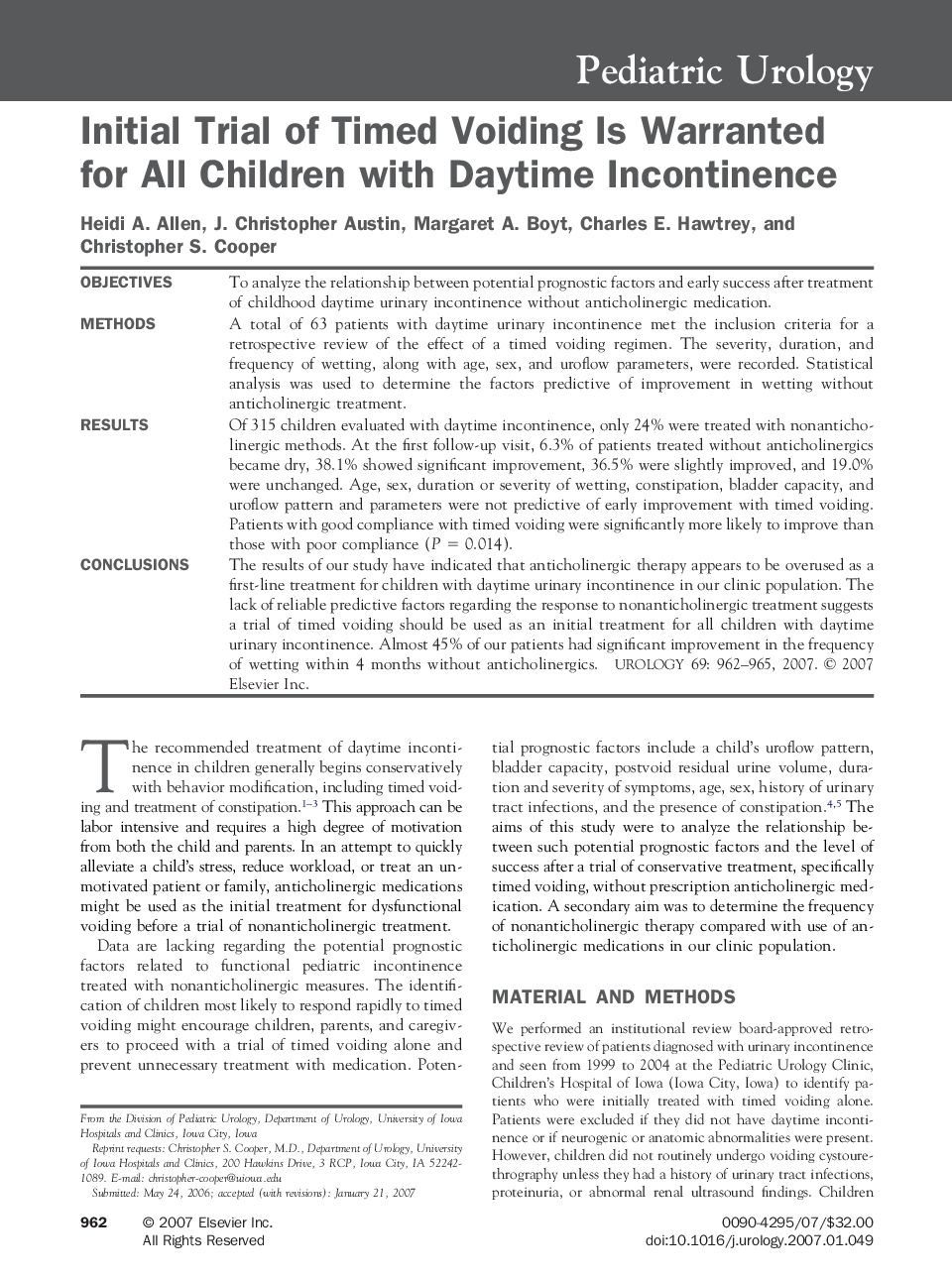| Article ID | Journal | Published Year | Pages | File Type |
|---|---|---|---|---|
| 3906598 | Urology | 2007 | 4 Pages |
ObjectivesTo analyze the relationship between potential prognostic factors and early success after treatment of childhood daytime urinary incontinence without anticholinergic medication.MethodsA total of 63 patients with daytime urinary incontinence met the inclusion criteria for a retrospective review of the effect of a timed voiding regimen. The severity, duration, and frequency of wetting, along with age, sex, and uroflow parameters, were recorded. Statistical analysis was used to determine the factors predictive of improvement in wetting without anticholinergic treatment.ResultsOf 315 children evaluated with daytime incontinence, only 24% were treated with nonanticholinergic methods. At the first follow-up visit, 6.3% of patients treated without anticholinergics became dry, 38.1% showed significant improvement, 36.5% were slightly improved, and 19.0% were unchanged. Age, sex, duration or severity of wetting, constipation, bladder capacity, and uroflow pattern and parameters were not predictive of early improvement with timed voiding. Patients with good compliance with timed voiding were significantly more likely to improve than those with poor compliance (P = 0.014).ConclusionsThe results of our study have indicated that anticholinergic therapy appears to be overused as a first-line treatment for children with daytime urinary incontinence in our clinic population. The lack of reliable predictive factors regarding the response to nonanticholinergic treatment suggests a trial of timed voiding should be used as an initial treatment for all children with daytime urinary incontinence. Almost 45% of our patients had significant improvement in the frequency of wetting within 4 months without anticholinergics.
